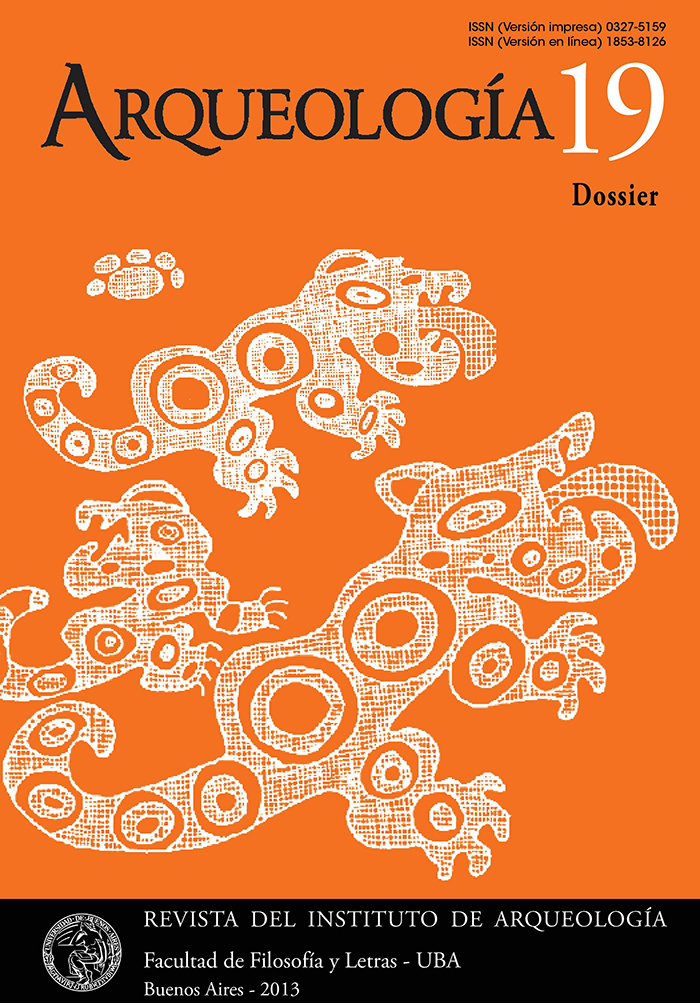La Tumba Tebana 49 y su propietario, en el paisaje sacralizado del occidente tebano, Egipto
Palabras clave:
Tumba de Neferhotep, Templos de millones de años, Práctica ritual, Memoria cultural, Egipto, Reino Nuevo
Resumen
La tumba de Neferhotep (TT49) es un monumento privado, cuya localización habría tenido vinculaciones con las fisonomías naturales y la dotación material del paisaje, en la realización de prácticas funerarias del Reino Nuevo. La escasa conservación de la evidencia material requirió de la implementación de vías analíticas que tras-cendieran los enfoques egiptológicos tradicionales privilegiando el estudio del comportamiento humano. La exis-tencia de registros documentales y arqueológicos hizo evidente la necesidad de plantear investigaciones interdisci-plinarias, puesto que tanto la localización de la tumba en el paisaje como su construcción y decoración atendieron tanto a cuestiones prácticas -depositación de momias y equipamiento funerario-, como simbólicas -ritos mor-tuorios- y sociales -alianzas-. Los lineamientos teóricos interrelacionan conceptos provenientes de la arqueología, enfatizando la dotación arquitectónica y simbólica del espacio y las propiedades físicas del registro material en la conformación de depósitos; de la historia, en cuanto a la reproducción social y construcción de memoria cultural; y de la antropología, para la comprensión del equilibrio social y trascendental a los que contribuyeron las prácticas rituales. Su aplicación intenta reconocer cómo opera la construcción de memoria cultural en la consolidación de un paisaje sacralizado, sensible a cambios ideológicos y ‘dinamizados’ a través de las celebraciones rituales.Descargas
La descarga de datos todavía no está disponible.
Cómo citar
Pereyra, M. V., Manzi, L. M., & Broitman, L. M. (1). La Tumba Tebana 49 y su propietario, en el paisaje sacralizado del occidente tebano, Egipto. Arqueología, 19(3), 103-123. https://doi.org/10.34096/arqueologia.t19.n0.1677
Sección
Artículos
Los autores/as que publiquen en esta revista aceptan las siguientes condiciones:
- Los autores/as conservan los derechos de autor y ceden a la revista el derecho de la primera publicación, con el trabajo registrado mediante Licencia Creative Commons 4.0 Internacional (CC-BY-NC-SA), que permite a terceros utilizar lo publicado siempre que mencionen la autoría del trabajo y a la primera publicación en esta revista.
- Los autores/as pueden realizar otros acuerdos contractuales independientes y adicionales para la distribución no exclusiva de la versión del artículo publicado en esta revista (p.e. incluirlo en un repositorio institucional o publicarlo en un libro) siempre que indiquen claramente que el trabajo se publicó por primera vez en esta revista.
- Se permite y recomienda a los autores/as a publicar su trabajo en Internet (p.e. en sus sitios web personales o en depósitos institucionales), tanto antes como después de su publicación en esta revista, siempre y cuando proporcionen información bibliográfica que acredite, si procede, su publicación en ella. De esta manera, pueden favorecerse intercambios productivos y a una mayor y más rápida difusión del trabajo publicado (vea The Effect of Open Access).



.png)

(1)13.png)






1.jpg)
1.png)
1.jpg)


13.png)
1.png)


(1)1.png)









